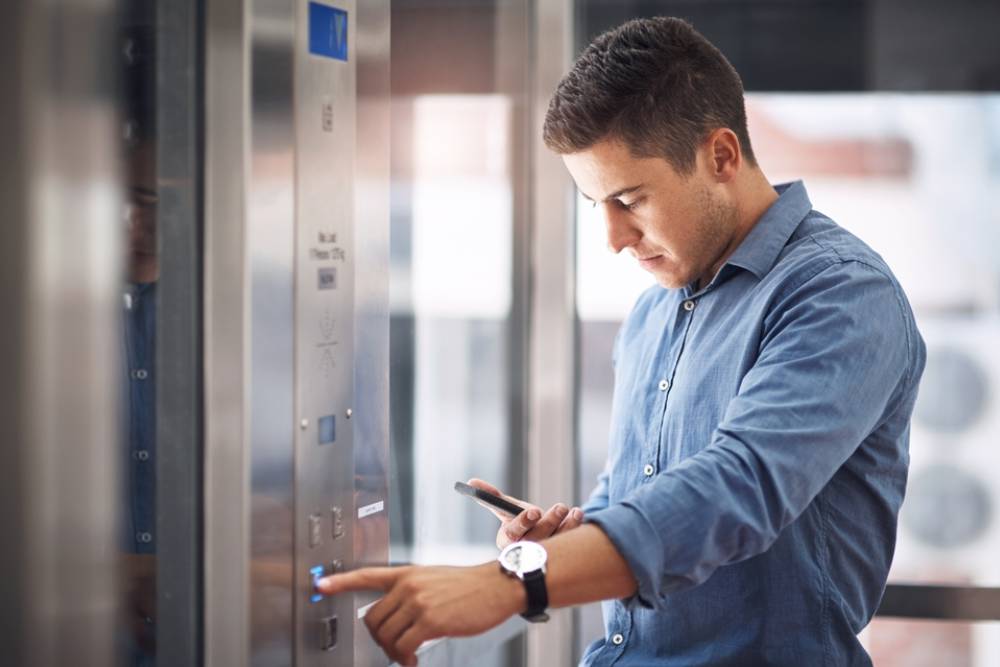Florida laws recognize that victims deserve justice if they have been harmed by unsafe conditions in an elevator. Receiving proper legal support from Abrams Justice Trial Attorney can be a significant step toward pursuing fairness. While the number of fatal incidents is relatively small compared to millions of daily elevator trips, injuries occur more frequently than many realize (CPSC Elevator and Escalator Injuries and Fatalities, 2019). Florida’s dense population and high-rise structures create conditions where awareness and adherence to regulations are critical.
Elevator Negligence
Elevator negligence in Florida occurs when property owners, managers, maintenance contractors, or manufacturers fail to maintain a standard of care that keeps elevator passengers safe. When these parties disregard scheduled inspections, fail to repair damaged components, or ignore known defects, users can be harmed. Florida law holds these parties accountable if their failure to ensure a safe environment leads to injuries.
Key features of elevator negligence include:
- Inadequate Maintenance:
If an elevator’s mechanical or electrical systems are not regularly inspected, lubricated, and tested, minor issues can grow into dangerous hazards. Examples include failing cables, malfunctioning brakes, and worn-out door sensors. - Improper Installation:
Incorrect installation of elevator parts can compromise stability. Using substandard materials or failing to adhere to the Florida Building Code can create unsafe conditions. The Florida Building Code guidelines are accessible online for reference. - Defective Safety Features:
Elevators must have functional alarms, emergency phones, and door sensors. If any of these components are defective and not fixed in a timely manner, passengers could face hazards such as entrapment or crushing injuries. - Non-Compliance with Regulations:
Florida’s statutory framework governs elevator safety. Sections of these statutes require owners to follow mandated inspection schedules and proper maintenance protocols. Failing to comply can form the basis of a negligence claim. - Ignoring Prior Warnings:
When unusual noises, sudden stops, or prior complaints from individuals arise, owners and managers must investigate. Ignoring these signals or delaying repairs can establish liability if injuries occur later.
When any of these factors come into play and someone is hurt, seeking assistance from an experienced elevator accident attorney in Florida can help victims determine if a viable claim exists.
Florida’s Regulatory Environment
Florida enforces strict laws governing the installation, inspection, and maintenance of elevators. The Florida Elevator Safety Act vests regulatory authority in the Florida Department of Business and Professional Regulation (DBPR). The DBPR’s Division of Hotels and Restaurants inspects public elevators and licenses companies and mechanics who work on these devices. More details about inspection requirements and licensing standards are available through the DBPR’s official resource.
Key points of Florida’s regulatory framework include:
- Regular Inspections:
Elevators in public facilities must undergo periodic inspections by certified inspectors. These evaluations confirm that brakes, emergency communication systems, and door sensors function as intended. - Prompt Repairs:
If an inspection identifies a hazard, owners must fix it promptly. Failure to do so violates state law and can serve as substantial evidence of negligence in a claim. - Compliance with Codes and Standards:
The Florida Building Code and related regulations detail specifications for elevator construction, modernization, and operation. These standards align with widely recognized guidelines from entities like the American Society of Mechanical Engineers (ASME).
According to the CPSC, an estimated 10,000 to 11,000 elevator-related injuries occur in the United States each year (CPSC Elevator and Escalator Injuries and Fatalities, 2022). Given Florida’s urban development and vertical growth, the state likely accounts for a significant portion of these incidents due to its substantial number of multi-story residential and commercial buildings.
Serious incidents have prompted legal actions in Florida. For example, in Schindler Elevator Corporation v. Carvalho, the legal arguments addressed the accountability of elevator maintenance companies when their actions or omissions contribute to injuries. This case and others like it highlight that elevator-related negligence claims are recognized and that courts carefully consider whether responsible parties upheld their duties.
Common Injuries Resulting from Elevator Negligence in Florida
Elevator negligence often leads to a wide range of injuries, many of which carry lasting physical, emotional, and financial consequences. Rather than simply listing examples of where or how these incidents occur, it’s important to understand the specific types of harm individuals may suffer. Florida law recognizes that those injured due to substandard maintenance, ignored safety warnings, or delayed repairs deserve compensation. Below are ten injuries that frequently arise in cases of elevator negligence:
- Fractures and Broken Bones:
When doors close unexpectedly or an elevator stops suddenly between floors, the impact can cause a person to lose their balance and fall, resulting in wrist, ankle, or hip fractures. These injuries often require surgery, casts, and long rehabilitation periods. - Head and Brain Trauma:
Rapid, unanticipated movements—such as sudden drops or jerking motions—may cause riders to strike their heads against elevator walls or floors. Concussions, contusions, and even more severe traumatic brain injuries can occur, leading to migraines, memory problems, and ongoing neurological concerns. - Back and Spinal Cord Injuries:
Abrupt stops, misaligned floors, or jolting movements can strain a rider’s spine. Herniated discs, chronic back pain, and, in extreme cases, spinal cord damage can arise. Such injuries may alter a person’s mobility, necessitating long-term medical care, physical therapy, and possible lifestyle modifications. - Shoulder, Knee, and Joint Damage:
A hard impact or sudden force can tear ligaments and damage joints. A door slamming on a shoulder or a fall triggered by a misleveled platform can lead to rotator cuff tears, knee injuries, or joint instability that require extensive treatment and can limit physical activities for months or years. - Nerve Damage and Chronic Pain:
Tight door closures or crush incidents can pinch nerves, creating lingering pain, numbness, or weakness in affected limbs. Victims may face persistent discomfort, difficulty performing daily tasks, and reliance on pain management techniques or medication. - Lacerations, Cuts, and Abrasions:
Rusted edges, broken handrails, or other neglected components can cause deep cuts and abrasions. While seemingly minor compared to fractures, these wounds can become infected, require stitches, and leave permanent scars if not addressed promptly. - Internal Injuries:
A severe jolt or fall within an elevator may cause internal injuries, including bruising to internal organs or internal bleeding. Such conditions often demand immediate emergency care, complex surgical interventions, and substantial recovery time. - Psychological and Emotional Harm:
Beyond physical injuries, being trapped, jolted, or injured in an elevator can provoke panic attacks, anxiety disorders, post-traumatic stress, and ongoing fear of enclosed spaces. Emotional harm can necessitate therapy and long-term mental health support. - Respiratory Complications:
In situations where ventilation systems are neglected and passengers become trapped for extended periods, existing respiratory conditions like asthma can worsen. Stress combined with stale or insufficient air can trigger attacks that lead to hospitalization and long-term breathing difficulties. - Long-Term Disabilities and Reduced Quality of Life:
Serious injuries may result in lasting disabilities, reduced mobility, or chronic pain that affects work, exercise, and leisure activities. Victims may require assistive devices, ongoing medical care, and lifestyle changes that diminish their overall quality of life.
When these injuries occur as a result of negligence—be it outdated parts, skipped inspections, or ignored safety protocols—victims may seek compensation to cover medical bills, lost wages, rehabilitation, and other associated costs. Understanding the types of injuries that can result from elevator negligence is the first step toward recognizing when it may be time to seek legal guidance and fight for your rights.
Establishing Eligibility for a Negligence Claim
To succeed in an elevator negligence claim, Florida law generally requires proof of four elements:
- Duty:
The defendant owed a duty to keep the elevator safe. Under Florida law, property owners and maintenance contractors must ensure that elevators meet safety standards. - Breach of Duty:
The defendant failed to maintain the elevator as required, violating Florida building codes, ignoring safety protocols, or skipping inspections. - Causation:
The plaintiff must show that the unsafe condition directly caused the injury. Medical records, witness accounts, and maintenance logs help link the defendant’s failure to the harm suffered. - Damages:
The plaintiff must demonstrate actual damages—such as medical expenses, lost wages, or pain—arising from the incident.
Potential Compensation in Florida Elevator Negligence Cases
Compensation depends on the specifics of each case. Common elements include:
- Medical Expenses:
Hospital bills, physician consultations, surgeries, rehabilitation, and prescribed medications may be recoverable. - Lost Wages and Future Earnings:
If the injuries prevent a victim from working temporarily or permanently, compensation may include current and projected income losses. - Non-Economic Damages:
Physical pain, mental distress, and reduced enjoyment of life may be compensable under Florida law, though caps and limitations may apply depending on the case. - Property Damage:
If personal belongings were damaged during the incident, their replacement or repair costs might be recovered.
Timelines and Statutes of Limitations
Florida law imposes deadlines for filing negligence claims. Generally, Florida Statutes Section 95.11 sets the time limit for personal injury claims. Victims usually have four years from the date of injury to file a lawsuit, though circumstances can affect deadlines. It is prudent to act promptly. Delays can lead to evidence loss, fading memories, and expired statutory windows.
The Claims Process in Florida
The legal process in Florida for an elevator negligence case often unfolds in distinct stages:
- Consultation and Evidence Review:
Victims reach out to a skilled elevator accident attorney who will review maintenance records, talk to witnesses, and examine medical documentation. - Pre-Suit Negotiations:
Before filing a lawsuit, attorneys may present the claim to the responsible party or their insurer. If the evidence is strong, an early settlement may be possible. - Filing the Lawsuit:
If no fair agreement emerges, the attorney files a lawsuit in the appropriate Florida court. The complaint outlines the facts, legal basis for liability, and the damages sought. - Discovery Phase:
Both sides exchange evidence, depose witnesses, and gather expert analysis (for instance, engineers who can explain mechanical failures). Although we must not use certain prohibited words, rest assured that professionals who understand elevator engineering and code compliance can testify about deviations from accepted standards. - Settlement Discussions and Mediation:
Most cases attempt settlement before trial. With robust evidence, a well-prepared attorney can secure a just resolution that compensates victims for their losses. - Trial, If Needed:
If the case does not resolve, it proceeds to trial. A judge or jury will review the evidence, witness testimonies, and arguments from both sides. The court then decides on liability and damages.
Why Choose Abrams Justice Trial Attorneys in Miami
Florida law empowers victims of elevator negligence to seek fair compensation from those who failed in their duty to ensure passenger safety By working with Abrams Justice Trial Attorney, victims benefit from dedicated representation, careful review of maintenance records, and strategic advocacy aimed at achieving just results. If you have suffered harm due to elevator negligence, protect your interests, seek the compensation Florida law provides, and contact us today to discuss how we can help.


